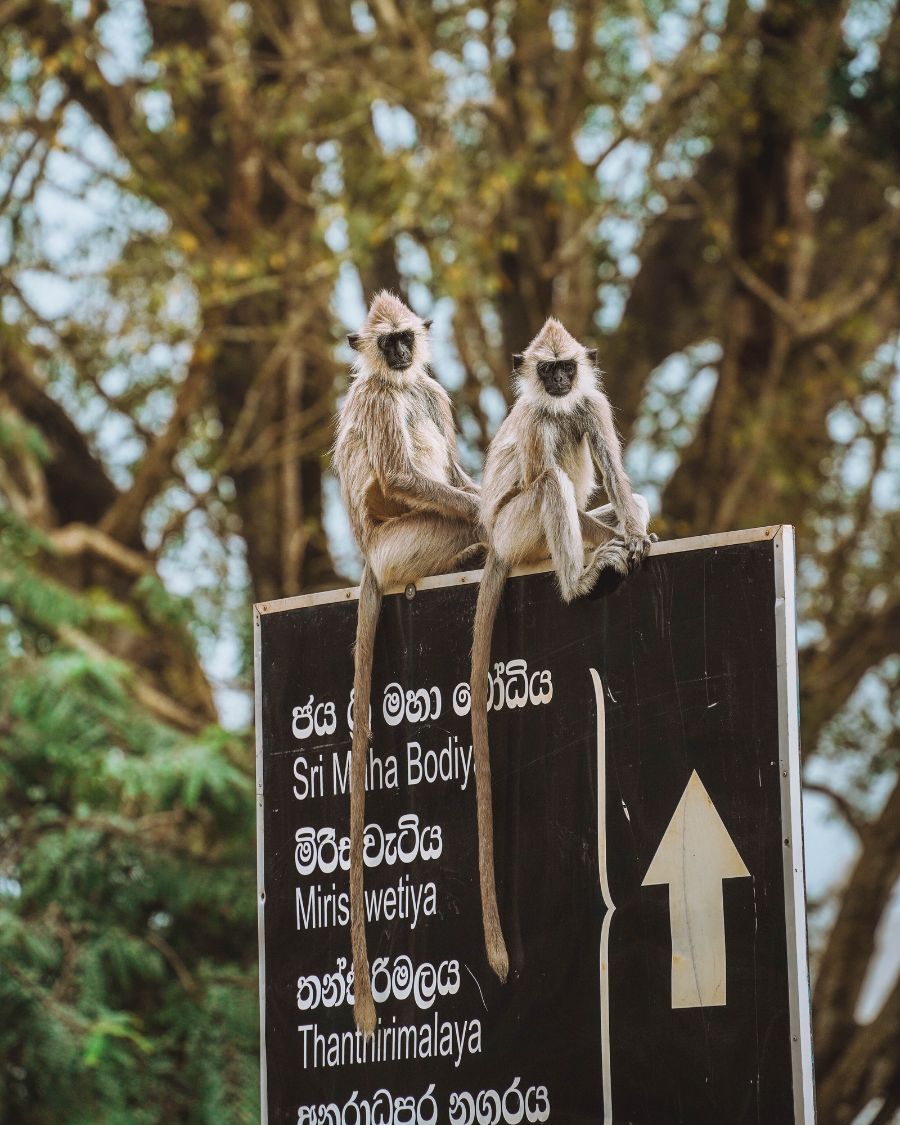
Elephants, Leopards & Sacred Ruins: Where to Experience Sri Lanka’s Wild Side. My Sri Lanka wildlife guide: where to go, what to see & what to avoid. Read on for where to see wildlife in Sri Lanka: top national parks, safaris and sacred sites.
Sri Lanka is a haven for wildlife enthusiasts — a place where elephants roam freely, leopards slink through jungle shadows, and vibrant birdlife flutters overhead. This teardrop-shaped island offers some of the most thrilling and accessible wildlife experiences in Asia. It is a nature lover’s paradise, packed with lush rainforests, sprawling national parks, and even archaeological sites and ancient sacred cities where wildlife roams free.
If you’re dreaming of seeing elephants in the wild, spotting leopards in the jungle, or watching playful monkeys swinging through ancient ruins — Sri Lanka should be at the top of your list. This lush island nation punches well above its weight when it comes to wildlife, with a range of national parks, coastal habitats, and sacred cities teeming with life.
But here’s the thing — not all wildlife experiences are created equal. Some are genuinely magical. Others? Downright depressing. Not every wildlife experience is as magical as it sounds. Some tourist attractions blur the line between conservation and cruelty, so it’s crucial to know where to go for ethical, awe-inspiring encounters.
In this guide, I’ll share the best places to see wildlife in Sri Lanka, from the famous safaris of Yala and Udawalawe to the cultural wonder of Anuradhapura. I’ll also point out a few spots you might want to skip — because nobody wants to support elephant cruelty disguised as tourism.
Ready to see the wild side of Sri Lanka — ethically and unforgettable? Let’s go.
Remember to buy travel insurance for your trip. Call of the World readers receive a 5% discount on Heymondo travel insurance.

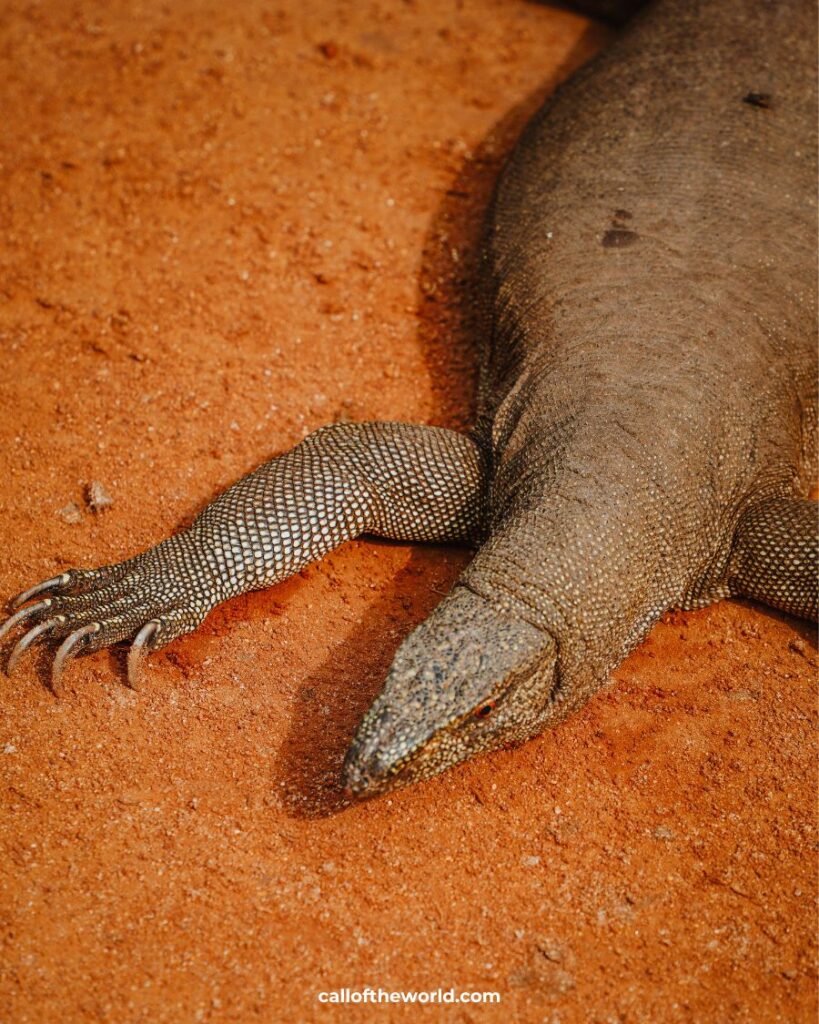
1. Yala National Park: The Best Place to Spot Leopards
Yala National Park is the crown jewel of Sri Lanka’s wildlife scene — and for good reason. With one of the highest leopard densities on the planet, it offers rare, heart-pounding sightings of these elusive big cats in the wild. Beyond the leopards, Yala’s mix of dense jungle, open plains, and shimmering lagoons provides a stunning backdrop for spotting elephants, crocodiles, sloth bears, and exotic birds.
But popularity has its drawbacks. During peak season, the park can feel more like a safari traffic jam, with too many jeeps crowding around a single animal. For a more serene and responsible wildlife experience, consider visiting during shoulder season — or exploring one of Sri Lanka’s lesser-known parks.
- Why Go: Yala is Sri Lanka’s most famous national park and boasts the highest leopard density in the world. It’s also home to elephants, crocodiles, sloth bears, and a vast array of bird species.
- What to Expect: The landscape here is a beautiful mix of dry forest, grasslands, and lagoons. Most safaris happen early in the morning or late in the afternoon for the best chance of animal sightings.
- Photography Tip: Bring a zoom lens! The best light is around golden hour, but midday shots can also be dramatic if you’re lucky enough to catch a leopard lounging in the shade.
- How to Visit: Most travellers stay in Tissamaharama, the gateway town to Yala. Jeep safaris can be arranged through hotels or local operators.
👉 Book: Full day / Half Day Wildlife Adventure in Yala National Park
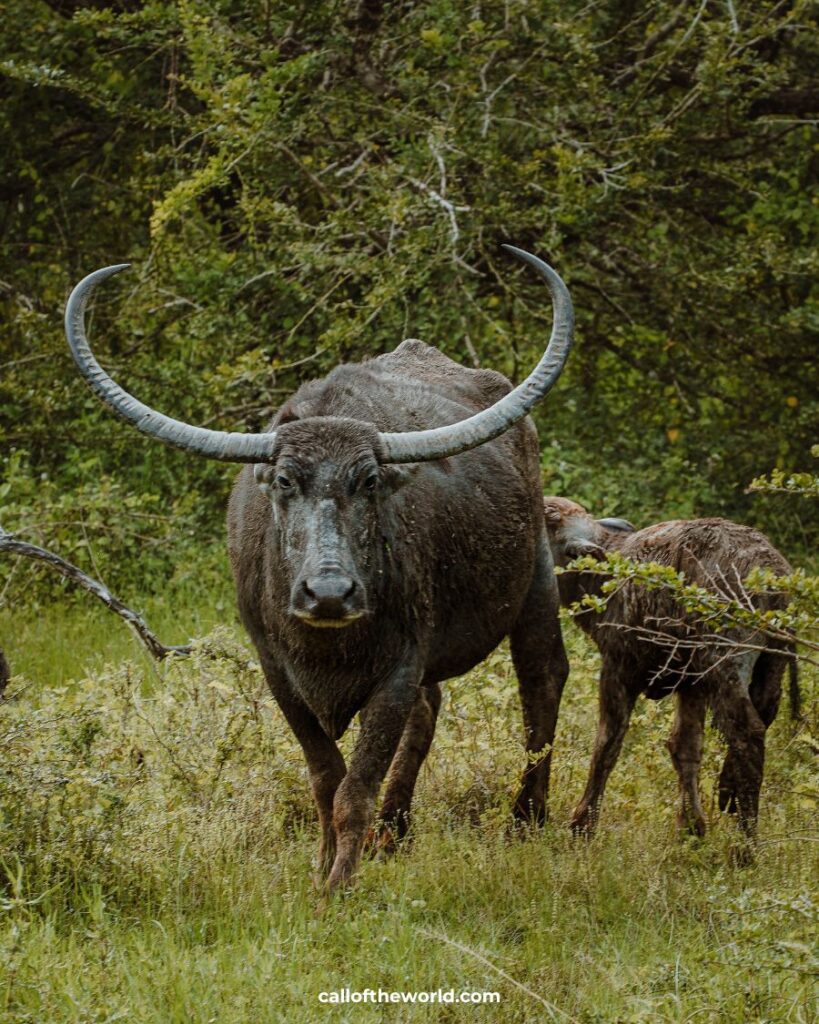
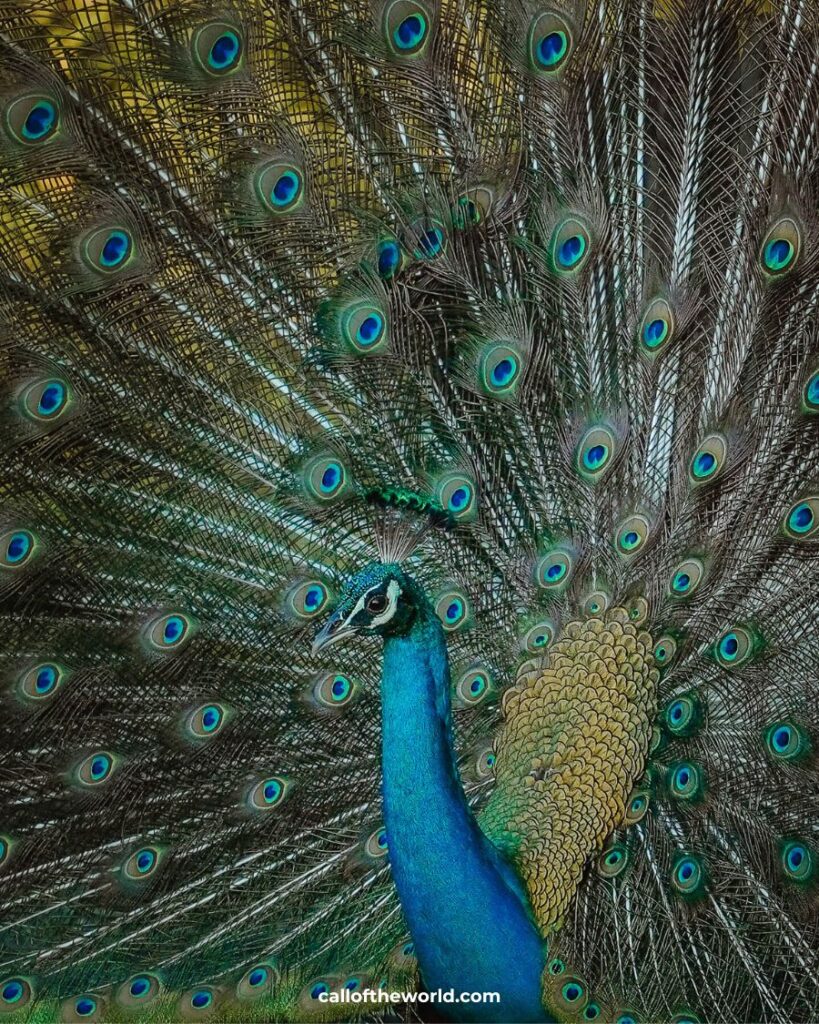
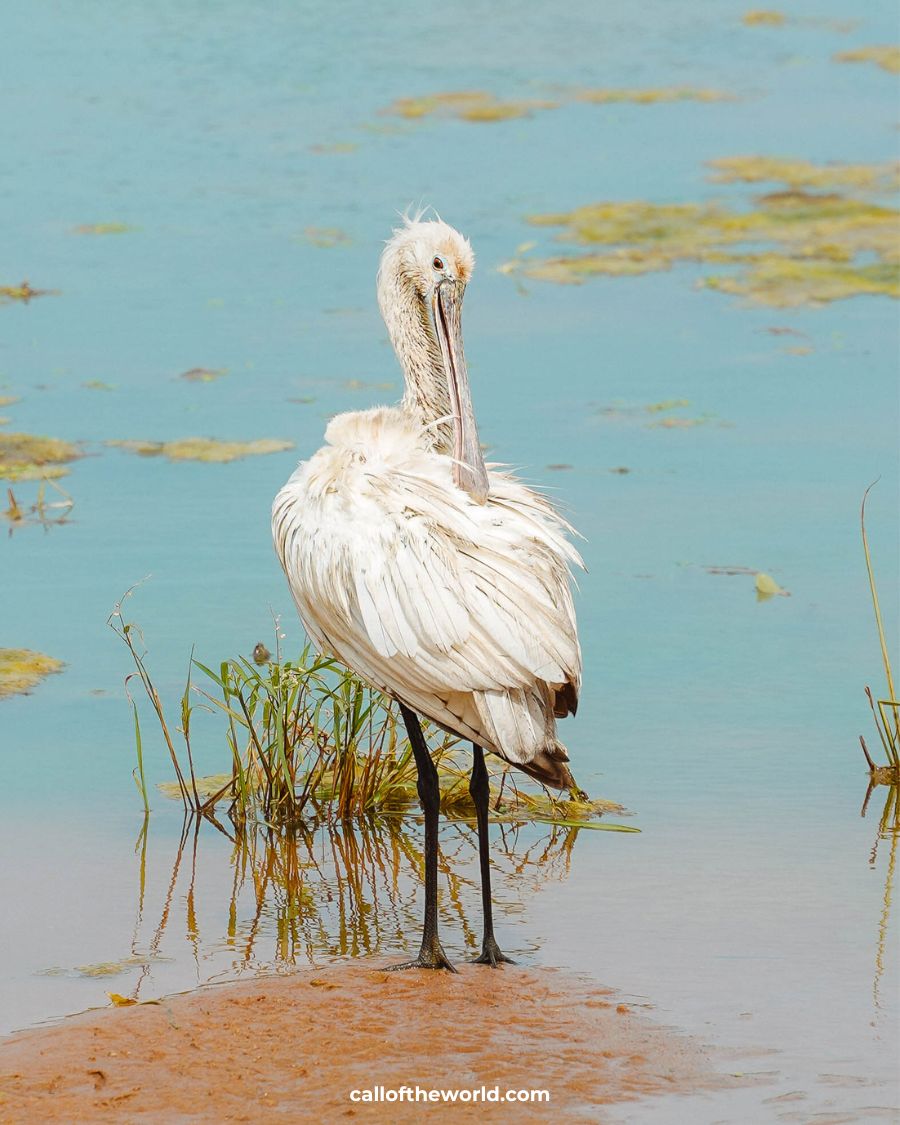
2. Udawalawe National Park: Elephant Encounters Guaranteed
If seeing wild elephants is high on your bucket list, head straight to Udawalawe National Park. It’s one of the best places in the world to see elephants roaming free in their natural habitat. Home to around 700 elephants, the park offers a high chance of sightings year-round.
The landscapes are wide open, with grasslands and scrublands that make wildlife easy to spot. You might also see water buffalo, spotted deer, peacocks, jackals, and the occasional crocodile.
- Why Go: If seeing elephants in the wild is top of your list, Udawalawe is the place to go. This park is famed for its large herds of elephants that are often spotted year-round.
- What to Expect: Open grasslands make it easier to spot animals here than in more forested parks. You might also see water buffalo, deer, and a variety of birds.
- Photography Tip: Early morning safaris offer the best lighting and least dust. Don’t forget to bring sunglasses for clear views.
- How to Visit: Stay near the town of Udawalawe or take a day trip from Ella or Mirissa. Tours typically last 3-4 hours.
Read: How to Visit Udawalawe National Park, Sri Lanka’s Wild Elephant Safari
👉 Book: Udawalawe National Park | Private Safari Tour

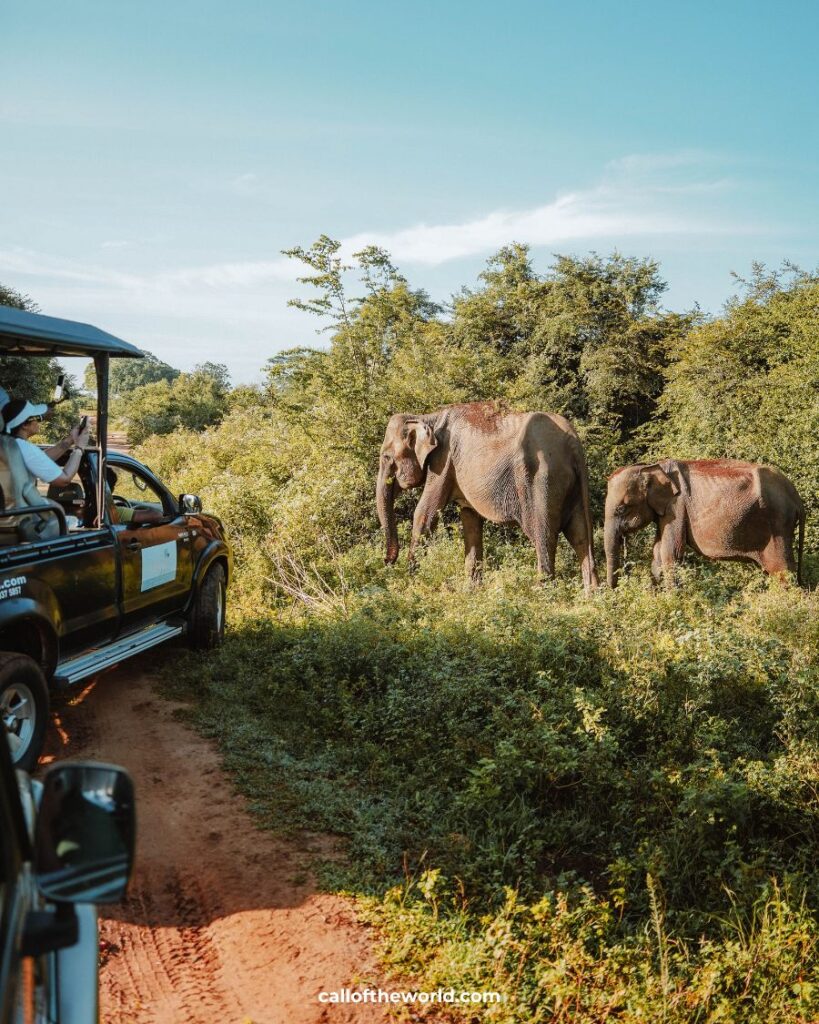

3. Minneriya National Park: Witness the Elephant Gathering
- Why Go: Every year between July and October, hundreds of elephants migrate to Minneriya’s central reservoir in what is known as “The Gathering” — the largest seasonal meeting of Asian elephants in the world.
- What to Expect: During the dry season, elephants gather in large groups, making this one of the most spectacular wildlife events in Asia.
- Photography Tip: Late afternoon light adds a golden glow to your elephant photos. Wide-angle shots can help capture the scale of the herds.
- How to Visit: Easily accessible from Sigiriya or Habarana, Minneriya is a convenient stop if you’re touring the Cultural Triangle.
👉 Book: Minneriya National Park half-day Safari
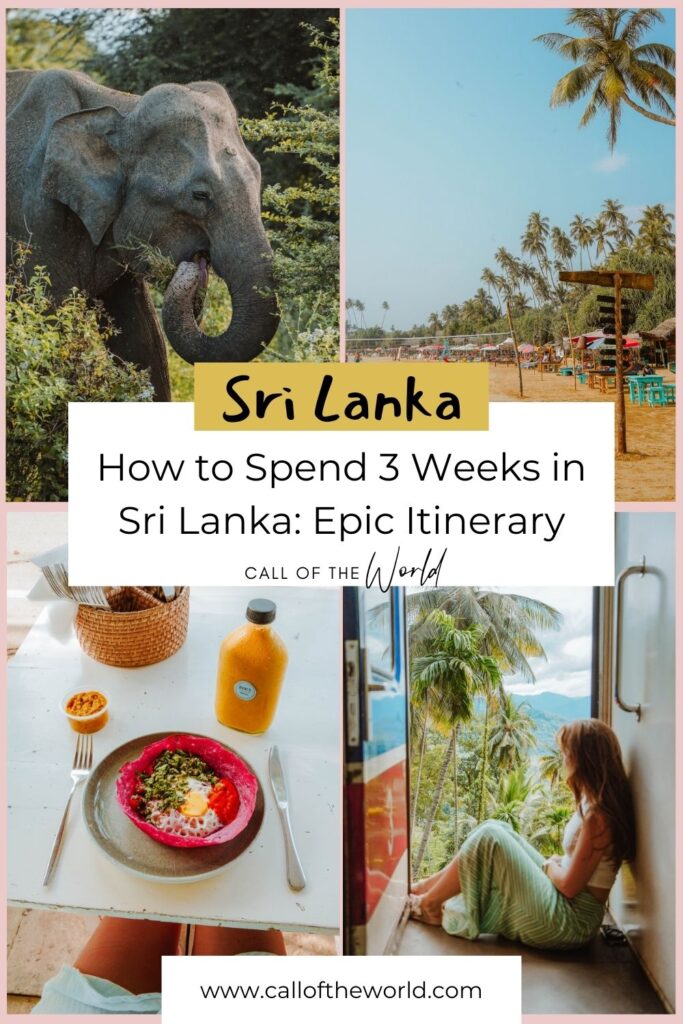

4. Wilpattu National Park: Off-the-Beaten-Path Adventure
If you’re craving a less crowded, more serene safari experience, Wilpattu is your place. Located in the north-west, it’s the largest national park in Sri Lanka and features stunning natural lakes (“villus”) and dense forest. Wildlife here is more elusive, but that makes each sighting feel extra special.
Leopards, sloth bears, and elephants all live here — and there’s a raw, untouched beauty to the landscape that makes it well worth the trip.
- Why Go: One of the oldest and largest national parks in Sri Lanka, Wilpattu offers a quieter alternative to Yala. It’s a good place to spot leopards, sloth bears, and birds without the crowds.
- What to Expect: Known for its “villus” (natural lakes), Wilpattu’s dense forest and open plains are ideal for spotting elusive wildlife.
- Photography Tip: Because the park is less visited, you’ll have better chances for undisturbed wildlife shots. Patience pays off here.
- How to Visit: The nearest town is Anuradhapura. Consider combining your safari with a visit to the Sacred City. Read: How to Visit Anuradhapura Sacred City, Sri Lanka.
👉 Book: Wilpattu National Park Jeep Safari from Negombo / Waikkal (All Inclusive)
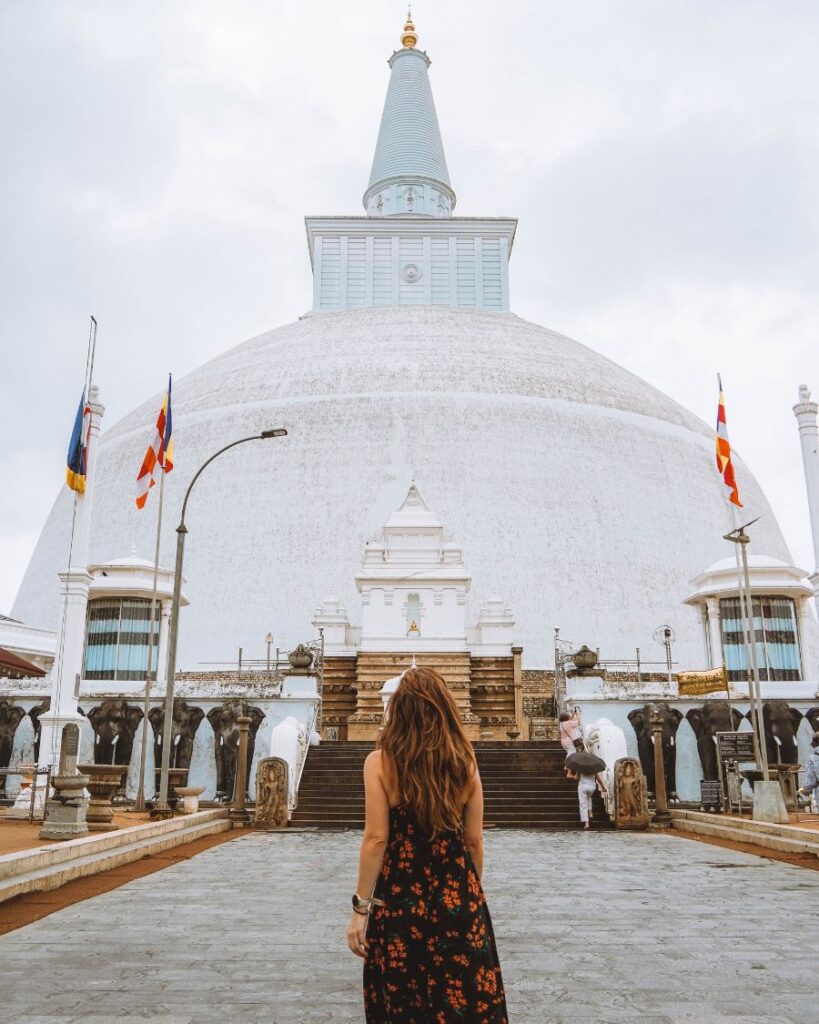
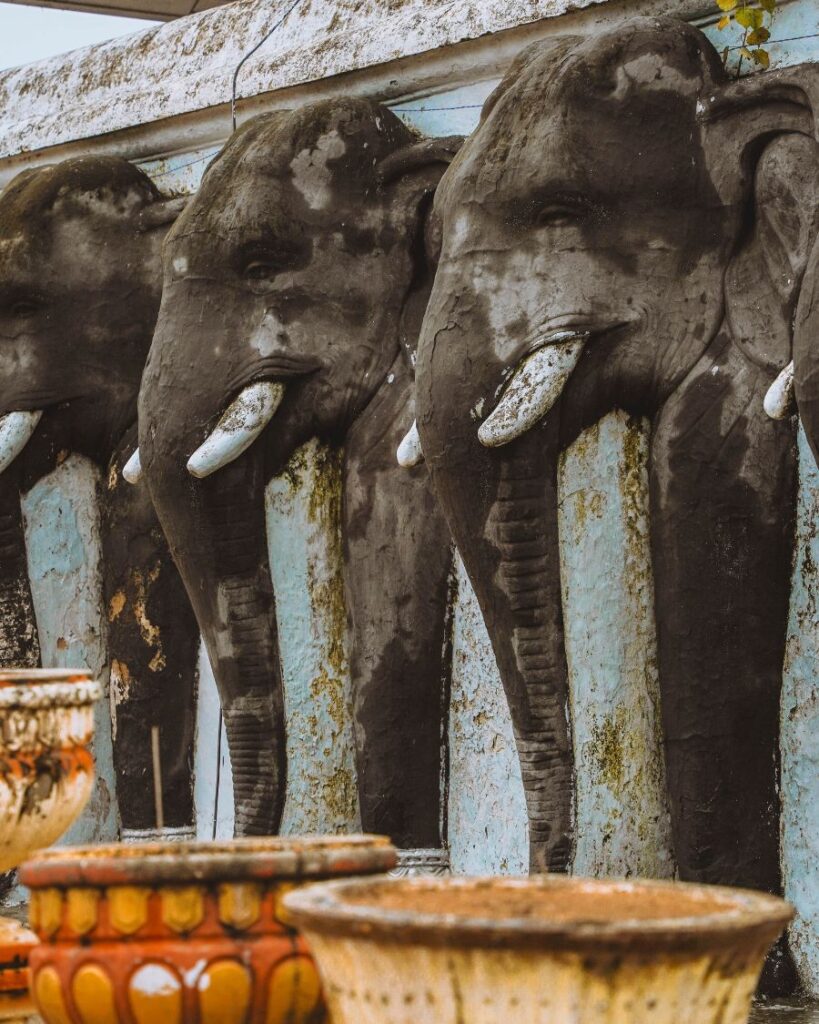
5. Anuradhapura Sacred City: Wildlife Meets Culture
You might not expect a UNESCO World Heritage site to be great for wildlife — but Anuradhapura delivers. As you explore ancient stupas and stone temples, keep an eye out for the troops of gray langurs and toque macaques that call this sacred city home.
Watching monkeys leap between 2,000-year-old ruins adds a dose of wild magic to your cultural adventure. Just remember: don’t feed them (even if they look like they’re begging) — it disrupts their natural behaviour and can create aggressive encounters.
- Why Go: A UNESCO World Heritage Site, Anuradhapura is not only a spiritual and historical destination but also a surprisingly good place for spotting wildlife.
- What to Expect: Among the ancient stupas and Bodhi trees, you’ll see toque macaques, grey langurs, peacocks, and even spotted deer.
- Photography Tip: Capture the contrast of animals roaming ancient ruins. Early morning visits provide soft light and fewer crowds.
- How to Visit: Located in Sri Lanka’s North Central Province, Anuradhapura is well-connected by train and bus. Hire a bike or tuk-tuk to explore the sprawling complex.
Read: How to Visit Anuradhapura Sacred City, Sri Lanka
👉 Book: Explore the History Of Anuradhapura in a Private Guided Tour
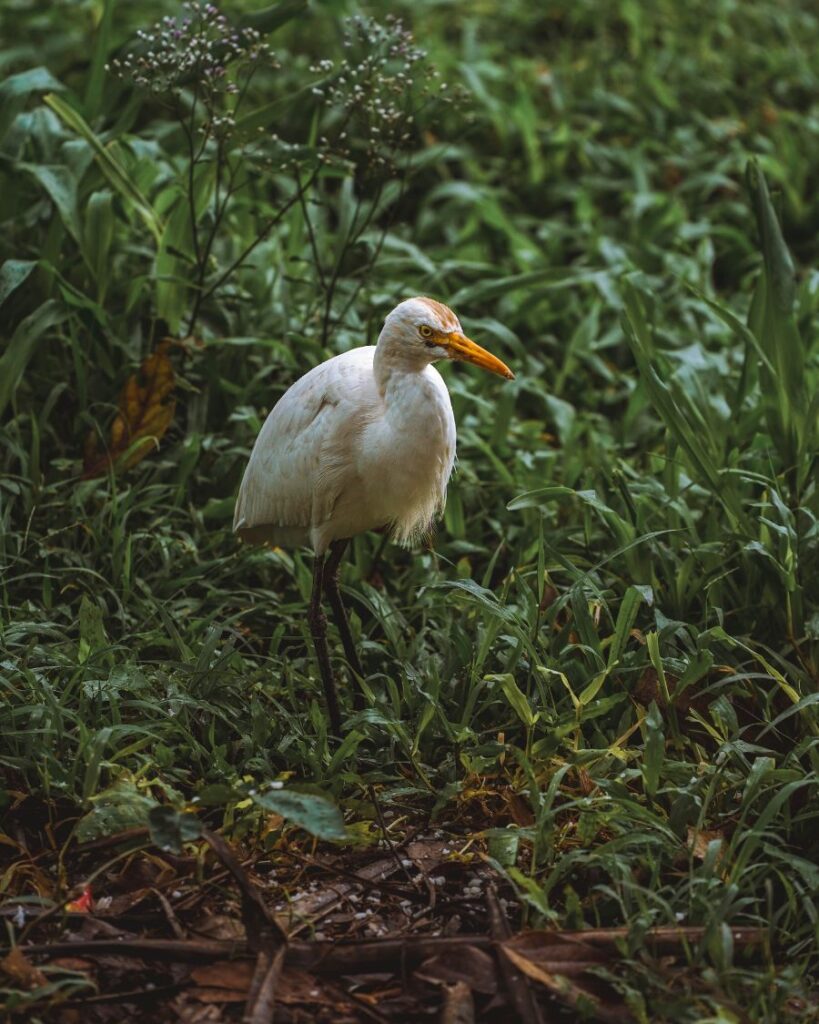

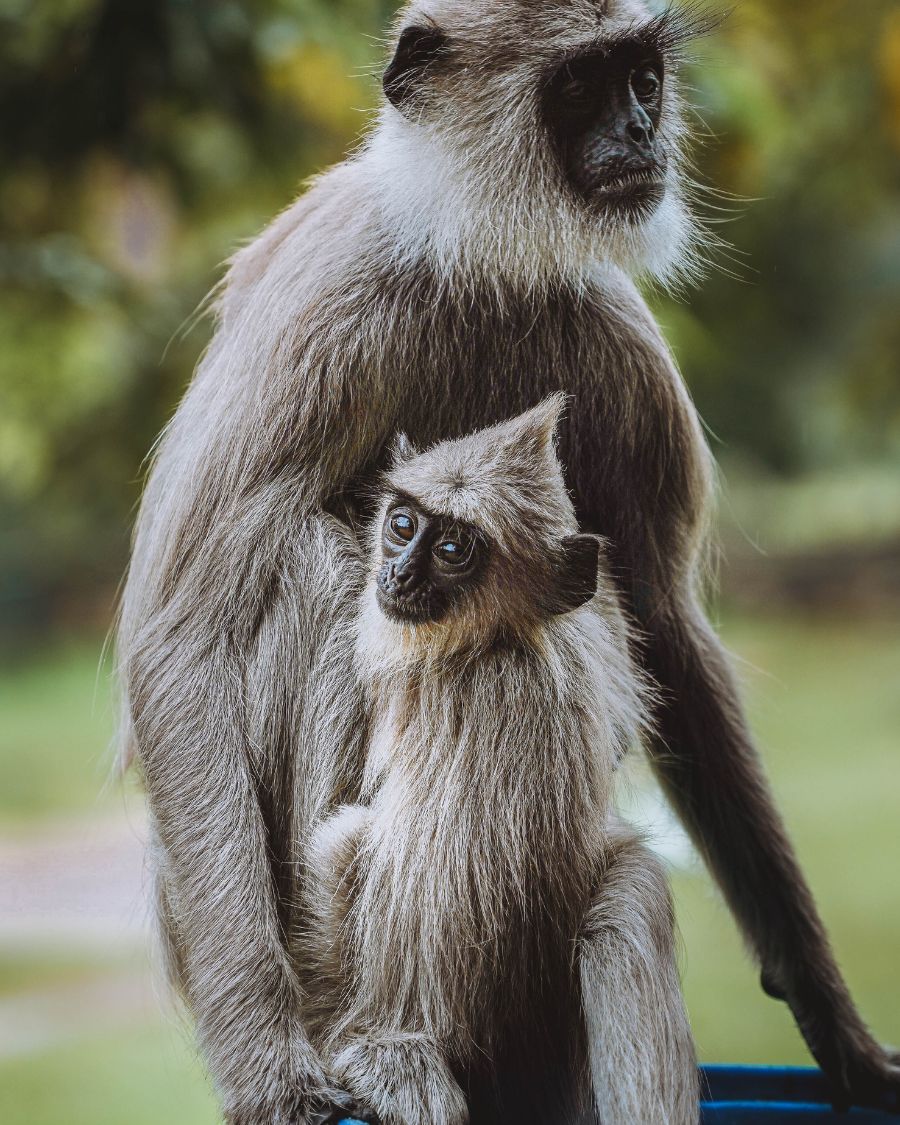
Bonus: Bundala National Park for Birdwatchers
If you’re into birds (or just want a break from elephant-chasing), Bundala is a hidden gem. It’s a UNESCO biosphere reserve and a key stopover for migratory birds — including flamingos, storks, pelicans, and more.
While you won’t find leopards here, you might spot elephants and crocodiles lounging by the wetlands. It’s peaceful, often overlooked, and full of photographic opportunities.
- Why Go: This lesser-known park near Yala is a haven for bird lovers, with over 200 species recorded. It’s also home to elephants, crocodiles, and turtles.
- What to Expect: Coastal lagoons and wetlands create the perfect environment for flamingos, storks, and eagles.
- Photography Tip: Morning and evening light reflects beautifully off the water. A telephoto lens is ideal for bird photography.
- How to Visit: Bundala is an easy add-on to a Yala trip. Most accommodations in Tissamaharama offer combo safari packages.
👉 Book: Bundala National Park Birds Watching Safari Tour

Where to See Wildlife in Sri Lanka: Map
General Tips for Wildlife Watching in Sri Lanka
- Best Time to Visit: December to April for southern parks like Yala and Udawalawe; July to October for the Elephant Gathering at Minneriya.
- What to Bring: Binoculars, insect repellent, sunblock, and a good camera with zoom capabilities.
- Respect the Wildlife: Always follow park guidelines and never feed or approach wild animals.
Places to Avoid: Unethical Wildlife Tourism in Sri Lanka
While Sri Lanka offers incredible wildlife experiences, not all attractions are created equal. Some locations marketed as “sanctuaries” or “orphanages” sadly exploit the very animals they claim to protect. Here are a few places you may want to skip in favour of more ethical options:
🚫AVOID: Pinnawala Elephant Orphanage
Despite its popularity, Pinnawala Elephant Orphanage has drawn criticism from conservationists and animal welfare organisations. Elephants here are often kept in chains, even when being led to bathe in the river — an activity heavily marketed to tourists. Although the site claims to rehabilitate orphaned elephants, reports and visitor experiences suggest otherwise.
In reality, Pinnawala is a tourist trap that chains elephants for entertainment.
Read the first-hand experience of fellow travel bloggers Hand Luggage Only here: Here’s Why You Should Never Visit Pinnawala Elephant Orphanage In Sri Lanka
If you’re passionate about animal welfare, it’s best to avoid supporting facilities where animals are not free to roam or are used in performances and photo ops. Instead, opt for national parks where elephants and other wildlife can be observed in their natural habitats, like Udawalawe or Minneriya National Parks.
Read: Is It Ever Ok to Visit Elephant Sanctuaries?
Ethical Wildlife Watching in Sri Lanka: Quick Tips
- Always book with reputable tour operators focused on conservation.
- Avoid any tour that lets you touch, ride, or feed wild animals.
- Stay quiet during safaris and avoid getting too close.
- Choose parks with fewer visitors for a better (and kinder) experience.
Whether you’re chasing big cats, photographing birds, or watching elephants stroll through the grasslands — just remember to do it ethically.
Because the wild is best when it stays wild.
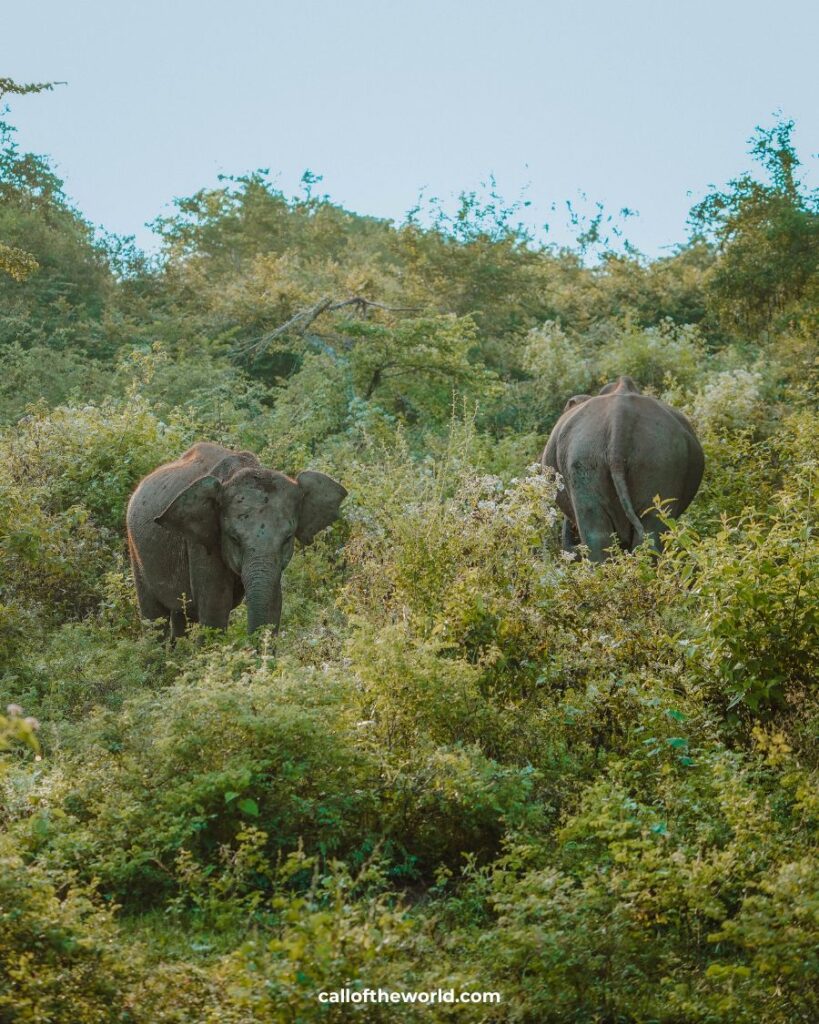
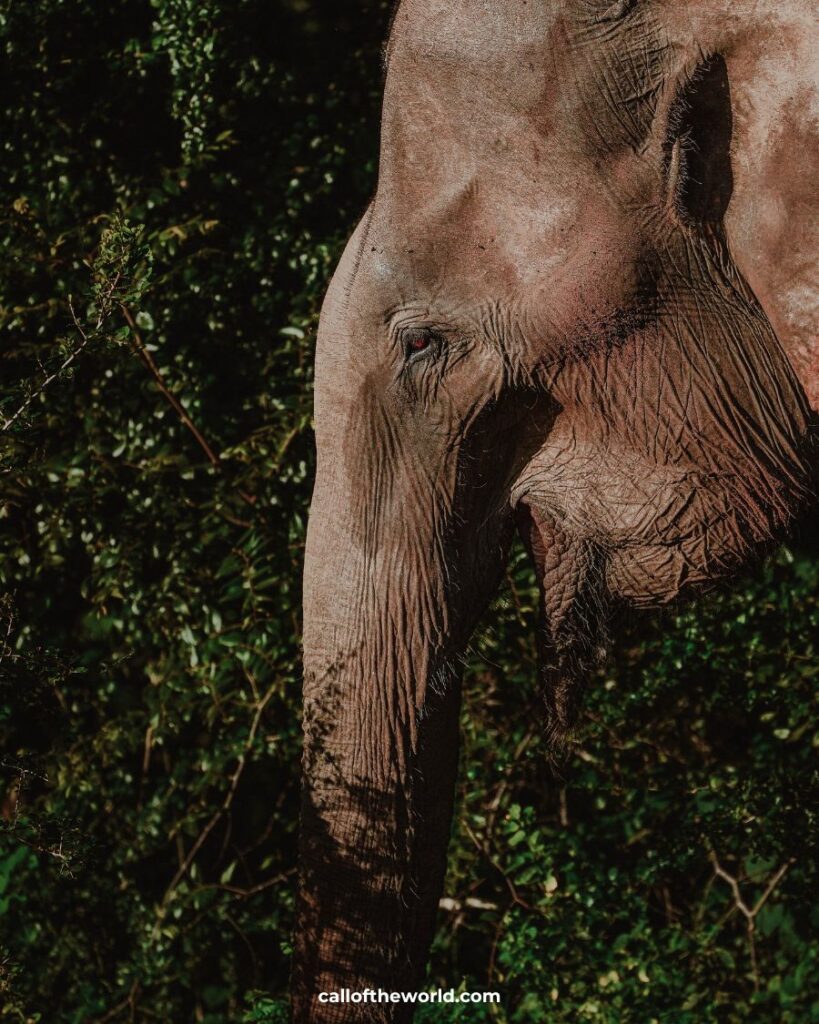

Where to See Wildlife in Sri Lanka: Final Thoughts
Whether you’re tracking elusive leopards through the jungles of Yala or watching monkeys swing through Anuradhapura’s temples, Sri Lanka offers a unique blend of wildlife and culture. Plan your trip well, and you’ll leave with unforgettable memories and awe-inspiring photos.
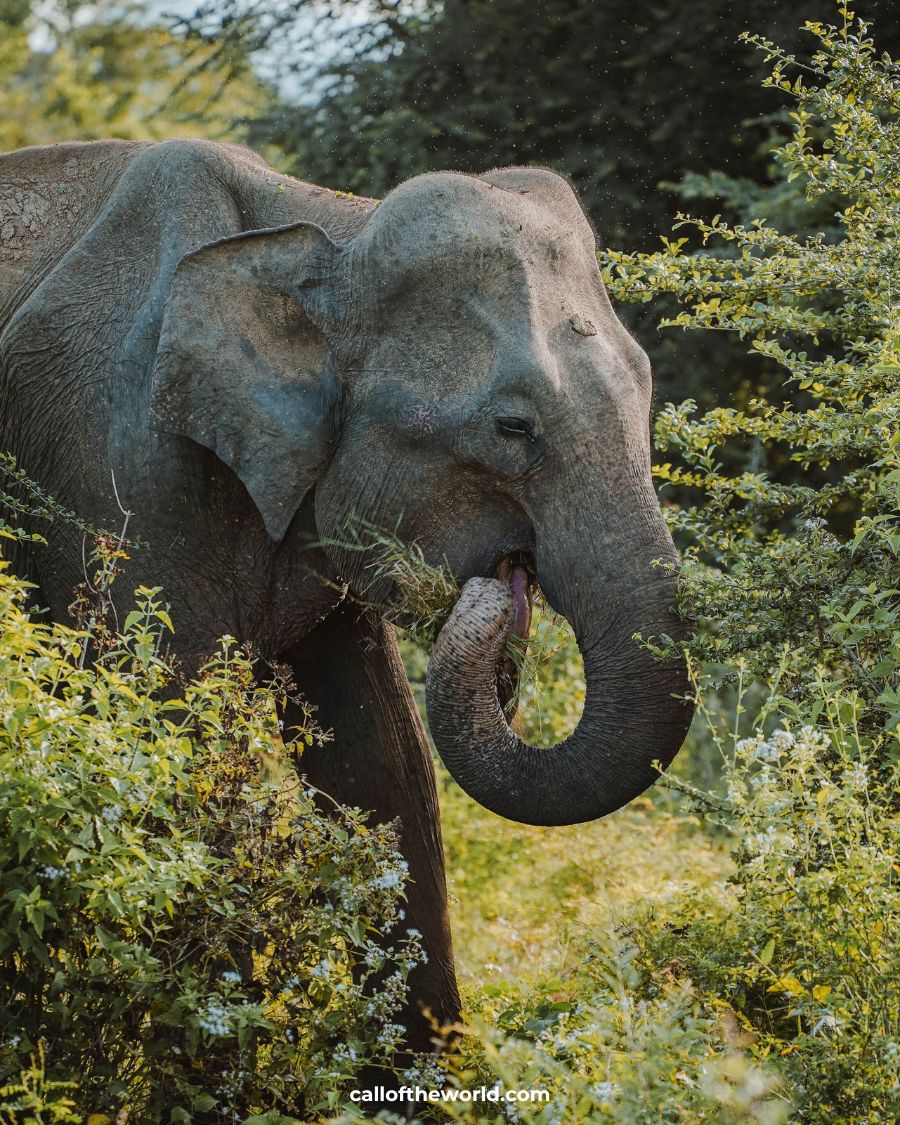
Pin it for later…
Was this Sri Lanka travel guide about Where to See Wildlife in Sri Lanka: Top National Parks, Safaris & Sacred Sites useful for you? Save it on Pinterest and follow along on Instagram for some escapism and more adventure tips.
Have you been to Sri Lanka? What was your favourite spot? Anything you’d like me to add to this Guide to Where to See Wildlife in Sri Lanka: Top National Parks, Safaris & Sacred Sites? Let me know in the comments!


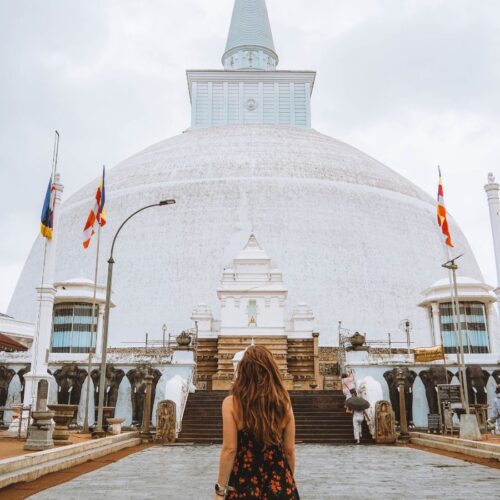

Leave a Reply